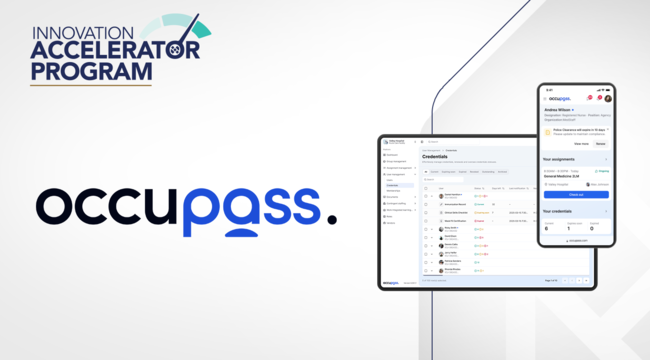HealthPRO Canada News
September 03, 2019
Interview with Brian Mangan, Value-based Procurement Project Lead at Supply Chain Coordination Ltd. UK
Interview with Brian Mangan, FCIPS, MSc
Value-based Procurement Project Lead at Supply Chain Coordination Ltd. UK
 The old model of procurement based on price alone is not sustainable. But that doesn’t mean selling value-based procurement is easy – many of the benefits like productive partnerships and pathway savings are not visible and take time to implement. The approach Brian Mangan developed in his role while working as Deputy Director at NHS North West Procurement Development, was based on taking a stepped approach, building relationships based on in trust and openness, and of course, keeping it simple.
The old model of procurement based on price alone is not sustainable. But that doesn’t mean selling value-based procurement is easy – many of the benefits like productive partnerships and pathway savings are not visible and take time to implement. The approach Brian Mangan developed in his role while working as Deputy Director at NHS North West Procurement Development, was based on taking a stepped approach, building relationships based on in trust and openness, and of course, keeping it simple.
Brian started his own business (Brian Mangan Associates Ltd.) in the spring and his current assignment is working for Supply Chain Co-ordination Ltd., the management function of NHS Supply Chain. He spoke to HealthPRO on a sunny afternoon from his home in Liverpool.
Q: Can you tell me about your background and your role at NHS?
My career actually began at the post office – I was at the counter selling stamps and paying pensions. I moved to stores (still with the postal service) and found myself in procurement. I joined the NHS in 2004, working at a small specialist hospital called the Walton Centre NHS Trust and after three years transitioned to a medium-sized acute care hospital.
In 2013, together with my boss, we started NHS North West Procurement Development (NHS NWPD). The goal was to develop a procurement transformation strategy for the 35 NHS provider organizations, which to us meant promoting and implementing a completely different approach to procurement.
Q: There are many opinions and interpretations about value-based procurement; some interpret it as outcomes based procurement, some believe that it’s the act of procuring a new solution to a problem, and others interpret it as the simple act of evaluating a supplier’s product on factors other than price. Can you please help clarify?
The approach is really summed up in the diagram showing how pathway savings and efficiencies are achieved. For me VBP is about the procurement of pathways – in essence it’s whole life costing. The challenge within healthcare is to realize and measure a tangible saving within a realistic time scale.
Ultimately the vision is to move towards VBHC (value-based health care), but the way things are at present, I don’t think the finance regimes in industry and healthcare are geared up for this. Both sides are incentivized by short-term annual sales and savings targets. VBHC requires significant system and cultural change on both sides and in my view VBP is a logical and more achievable stepping stone in this transition.

Q: Can you tell me about the NHS approach to value-based procurement?
In all of healthcare, as we know, there are huge financial pressures. These fears and demands to find savings result in a short-term approach to cutting costs – but you can only go so far with that and then you start to flatline. Like the proverbial iceberg, all you see at the top is price, but there is a lot going on beneath the surface and that is where the true value is.
With VBP, we get the hospital to look at the things that aren’t visible – pathway savings; improved collaboration between procurement, clinicians, and suppliers; and investments in product and service innovation.
The way we are currently looking to develop VBP is to run a number of small-scale pilots and focus on improved relationships with suppliers and tangible savings delivery. Our whole approach has been built around the idea that procurement can and should be playing a key role in achieving outcomes in healthcare that improve value and lower costs.
Q: What are the biggest challenges and opportunities of value-based procurement?
The way we see it, there are really four significant barriers to adoption. The first two are the departments of Finance and Procurement – both are built around annual budgets with targets based on price reduction. There is no incentive for procurement teams to adopt an approach like VBP that will deliver long-term strategic benefits since they are measured on in-year product savings.
The third problem stems from adversarial relationships with suppliers and the lack of transparency around pricing policies.
Some people say the fourth barrier is related to negative perceptions of VBP within the hospital, but I would dispute that. From my experience, the clinicians’ perception of VBP is on the whole positive since they can see we are not trying to get them the cheapest product, but one that can be better for the patient and help them in their jobs.
As far as opportunities, the increased efficiencies offered by VBP support the key global challenge for health systems – increased demands and limited financial resources, i.e., “Doing more with less”. And most important, working in true partnership with suppliers to focus on improved outcomes is a significant potential benefit to patients.
Q: In an ideal world, would value-based procurement be used to procure everything?
No, VBP can’t be used to procure everything since there are a number of products where you can’t measure the impact of the changes the product is having on the pathway or the patient. Measurement of benefits is an essential component of VBP.
Q: From your perspective, what are the key enablers to value-based procurement?
Many suppliers do not know how to bring value. We’re trying to do that with our value-based approach: the outcomes of procurement have to be tangible and measureable – tangible and measureable financial benefits and tangible and measureable improved patient outcomes. Because VBP is a more complex process, you need to be realistic about your time horizons and take a stepped approach. Just going from price to improved outcomes is too big a leap, we believe that VBP can be adopted when you introduce procurement targets that are based on patient pathways and efficiency improvements.
I’ll make two final points on crucial enablers – accessible data is essential in the delivery of VBP projects, and leadership from both industry and healthcare must be prepared to make the investment in terms of support and have a shared vision of moving from sales to solutions and from profit to partnerships.
Q: What advice would you give someone who wants to try value-based procurement?
In its early stages of adoption, VBP is a leap of faith for both buyers and suppliers. Both parties must have a mutually acceptable risk/gain share agreement that is built on a foundation of equality, respect and openness. After that, keep it simple:
- Start small – Select a project that clearly has a 1:1 relationship between adoption of the supplier proposal and a tangible benefit for the health system.
- Ensure clinical, finance and commercial stakeholders have all ‘bought in’ to the project objectives and measures.
- Use basic tools such as process mapping to establish current and desired state and cost of each stage.
- Ensure suppliers know they need to demonstrate how they will provide assurance and underwrite their cost-saving proposals.
- Focus on a small number of key measures to demonstrate benefits and that are readily available.
- ‘Prove and move’ quickly onto the next project, building on learning from your early experience.


